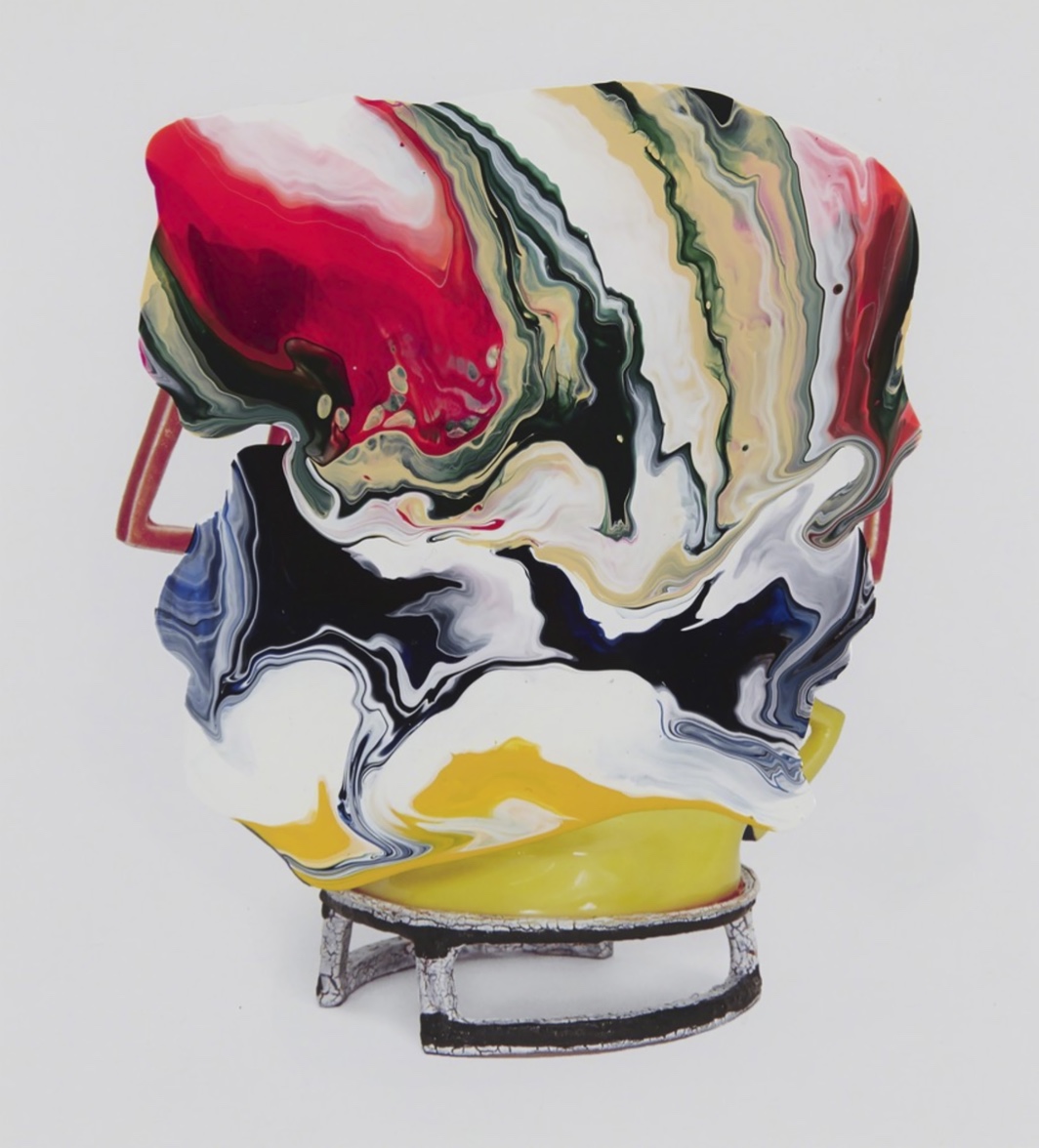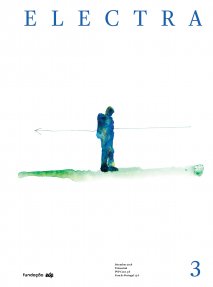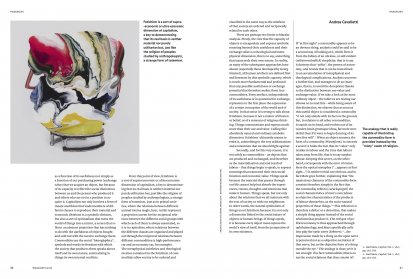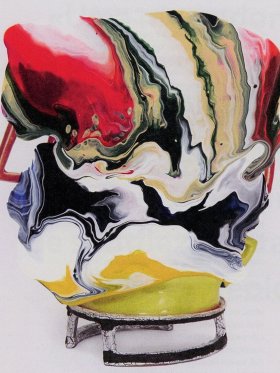Analysis uncovers a further fact, and manages to do so (manages, that is, to avoid the deception) thanks to the distinction between use-value and exchange-value. If we take a look at the most ordinary object – the table we are resting our elbows on to read this – while being aware of this distinction, we observe that as soon as this useful object is considered a commodity “it not only stands with its feet on the ground, but, in relation to all other commodities, it stands on its head, and evolves out of its wooden brain grotesque ideas, far more wonderful than if it were to begin dancing of its own free will”. When an object assumes the form of a commodity (Warenform), it conceals a secret: it hides the fact that its “value” only resides in labour and the time that labour takes away from life, that is to say surplus labour. Keeping this secret, on the other hand, corresponds with the error of vision. Here the optical metaphor (“...appears at first sight...”) is neither trivial nor obvious, and in fact Marx goes further, explaining that “the mysterious character of the commodity-form consists therefore simply in the fact that the commodity reflects [zurückspiegelt] the social characteristics of men’s own labour as objective characteristics of the products of labour themselves, as the socio-natural properties of these things.” This reflection is therefore a defect or a distortion, that makes a simple thing appear instead of the social relations that produce it. The critique of political economy is thus approached through ophthalmology, and Marx specifically calls into play the optic nerve (Sehnerv): “…the impression made by a thing on the optic nerve is perceived not as a subjective excitation of that nerve, but as the objective form of a thing outside the eye.” The analogy is clear; yet it is not enough: if in fact commodities (that is to say the social relations that they consist of) appear as simple things, if the exchange-value appears to be the natural value of a thing, the physical relation between one thing (that reflects light) and another (the eye) does not altogether explain the relation with the commodity-form and the labour value that it represents, which “have absolutely no connection with the physical nature of the commodity and the material [dinglich] relations arising out of this.” The analogy that is really capable of illustrating the commodity-form is provided instead by the “misty” realm of religion: just as in this sphere the products of the human brain seem to be autonomous figures, endowed with their own lives, relating to each other and to humans, so in the commodity a defined social relation takes on the fantastic form of a thing that by turn enters into a relation with other similar “things”. “I call this the fetishism which attaches itself to the products of labour as soon as they are produced as commodities.”
If “at first sight” a commodity appears to be an obvious thing, analysis could be said to be a second way of looking at it, which frees it from the fallacy of an obvious, or self-evident (selbstverständlich) simplicity: that is to say it destroys that “selbst”, the pretext of autonomy, and reveals that it can be traced back to an accumulation of metaphysical and theological complications.
"The analogy that is really capable of illustrating the commodity-form is provided instead by the “misty” realm of religion."

Kathy Butterly, Quake, 2017
Courtesy of the artist and Shoshana Wayne Gallery
The expression “at first sight” refers to a non-analytical way of looking that sees commodities rather than fetishes. This way of looking operates within a phantasmagoria of myths and idols, which it sees as simple, obvious and natural “things”; consequently, without recognising them, it worships them, practising a religion that keeps its own secret. Not only does this approach see a thing where there is only a play of light, but it attributes the origin of this projection to a thing and not to power relations. One might say, therefore, that those who do not spot these complications are simply using their optic nerves, when they should be looking beyond what is directly in front of their eyes. The illusion of the first sight consists precisely in it being sight: the phantasmagorical projection goes back to the fact that humans get to know commodities through their nerve fibres, seeking to look at them (and taking them for things). Showing itself in any event (it could not do otherwise), the commodity seduces its receiver; analysis, conversely, is not achieved with the nerves and does not believe what it sees with its own eyes. First of all, it observes that commodities are not self-sufficient, they “cannot themselves go to market and perform exchanges in their own right”, and it consequently turns to the “process of exchange”. In other words, analysis focuses on the commodities’ “guardians” who refer to themselves as possessors or, juridically, as persons, and it observes them closely, pushing still further beyond a simple matter of sight: “As we proceed to develop our investigation, we shall find, in general, that the characters who appear on the economic stage are merely personifications of economic relations…”. Analysis is a supplementary sight, not the first one, and it does not rely on the eyes because it knows that humans simply no longer have eyes, from the moment that they are themselves and for themselves, first and foremost, masked characters on a stage. The apertures in the characters’ masks, which produce strange distortions of light giving commodities the appearance of things, are cut from the same historically defined power relations that give things the form of commodities. And tables will stand on their heads as long as the metaphysical and theological principle of personal identity prevails within humans, or until people go back to being just masked characters (Charaktermaske, in Marx’s words) – in the most ancient meaning of those terms (persona, prosopon) – revealing in their entirety the powers that animate them.
"Tables will stand on their heads as long as the metaphysical and theological principle of personal identity prevails within humans, or people do not become just masked characters (Charaktermaske, in Marx’s words) – in the most ancient meaning of those terms (persona, prosopon)."
So that tables may continue to stand on their heads, on the other hand, it is necessary to maintain the semblance of the individual being (as one or as a people), a corporeal entity, endowed with things/organs that see things/commodities. But only what is not there can conceal a lack of existence; analysis of the exchange can only be escaped by that which refuses every exchange and appears to be more personal, fundamental, to be mine and no one else’s: so it is with death, which truly makes the eyes and the mask’s apertures equal. If the “experience of individuality in modern culture is… linked to the experience of death” (Foucault), it is because it remains inseparable from the liturgy of commodities and the worship of their values. The optical phantasmagoria is always animated, in the end, by the empty gaze of the dead. It is true that this masked character seems alive, at first sight, and dances and, by bringing commodities to the market, takes its turn in the limelight, with all its grotesque ideas.
*Translated by Emma Mandley / KennisTranslations





Share article